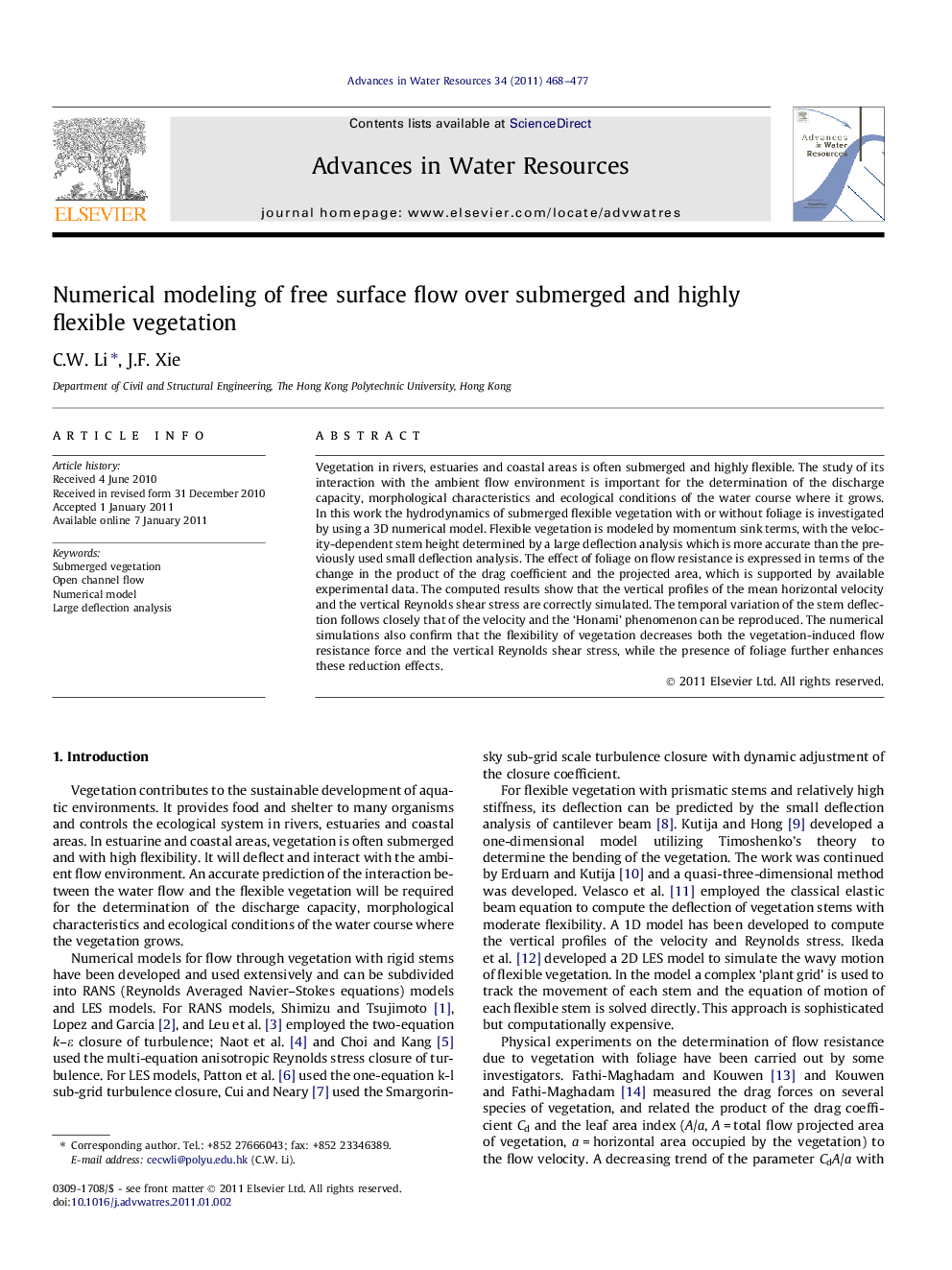| Article ID | Journal | Published Year | Pages | File Type |
|---|---|---|---|---|
| 4526058 | Advances in Water Resources | 2011 | 10 Pages |
Vegetation in rivers, estuaries and coastal areas is often submerged and highly flexible. The study of its interaction with the ambient flow environment is important for the determination of the discharge capacity, morphological characteristics and ecological conditions of the water course where it grows. In this work the hydrodynamics of submerged flexible vegetation with or without foliage is investigated by using a 3D numerical model. Flexible vegetation is modeled by momentum sink terms, with the velocity-dependent stem height determined by a large deflection analysis which is more accurate than the previously used small deflection analysis. The effect of foliage on flow resistance is expressed in terms of the change in the product of the drag coefficient and the projected area, which is supported by available experimental data. The computed results show that the vertical profiles of the mean horizontal velocity and the vertical Reynolds shear stress are correctly simulated. The temporal variation of the stem deflection follows closely that of the velocity and the ‘Honami’ phenomenon can be reproduced. The numerical simulations also confirm that the flexibility of vegetation decreases both the vegetation-induced flow resistance force and the vertical Reynolds shear stress, while the presence of foliage further enhances these reduction effects.
Research highlights► The hydrodynamics of submerged flexible vegetation is simulated by a 3D model. ► The vegetation height is determined through a large deflection analysis. ► The effect of foliage on flow resistance is parameterized. ► The model reproduces correctly the flow characteristics and the ’Honami’ phenomenon. ► Flow resistant and Reynolds stress are reduced by vegetation flexibility and foliage.
